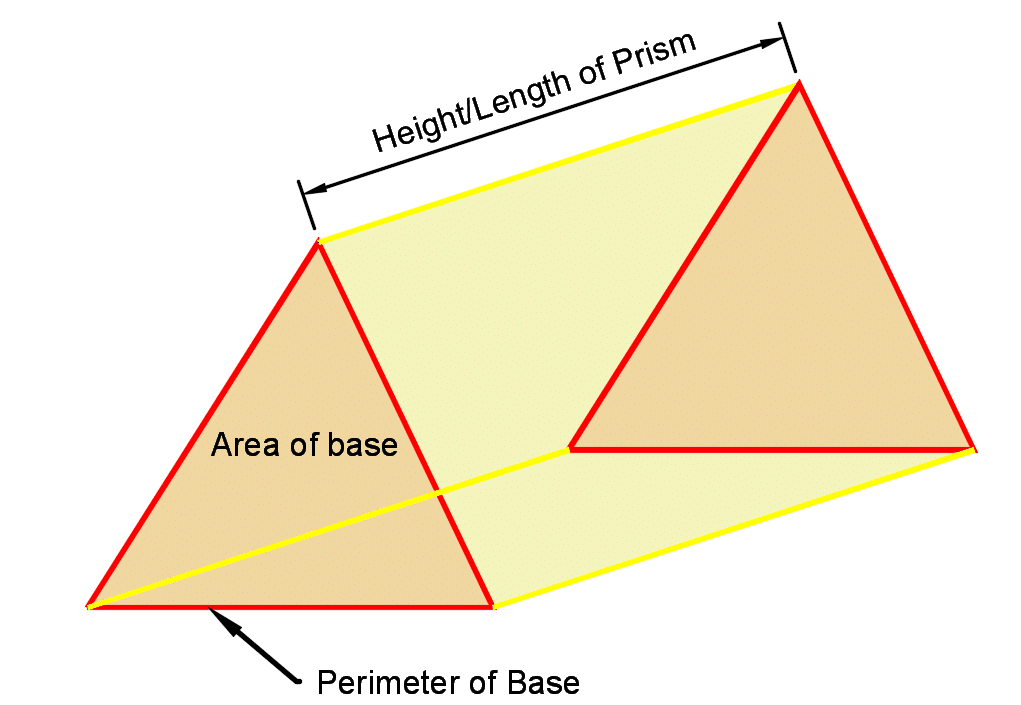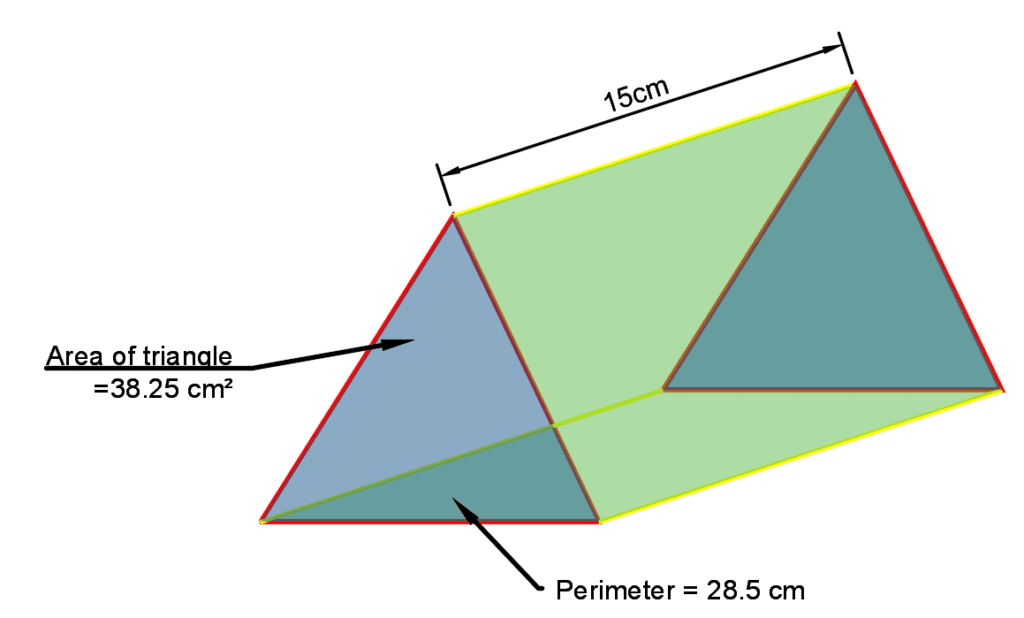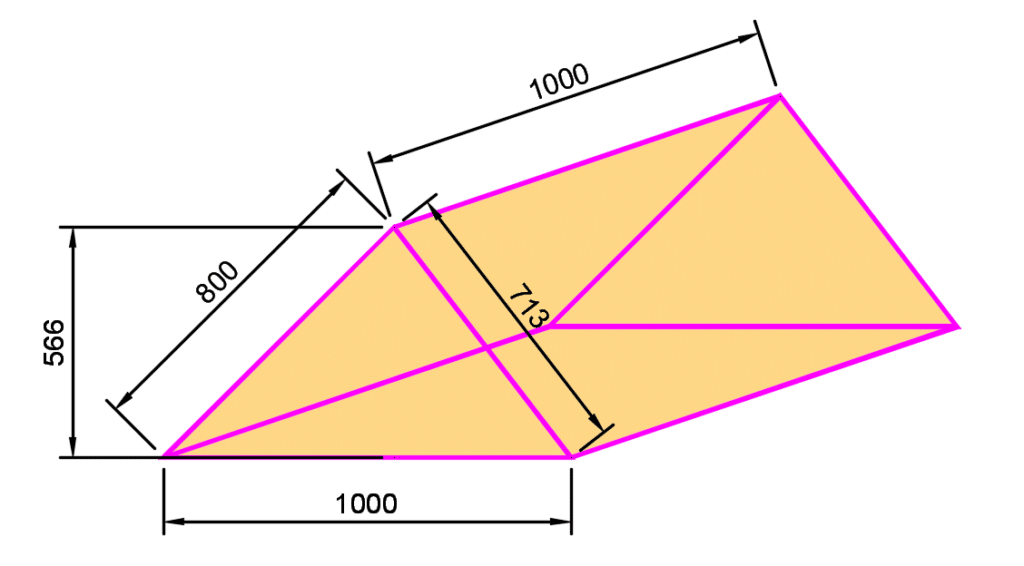Calculation of Prism Surface Area
Table of Contents
Surface Area of a Prism
The surface area of a prism formula is the sum of all the sides/faces of the 3D shape. A prism is a solid object with identical ends, flat faces and has the same cross-section along its length. (cylinders are not prisms).

The diagram of the prism shown on the left hand side, highlights the area of the base at both ends which are identical, giving 2B (B is base area).
B = area of base, P = perimeter of one base, h = height
The area of the faces is the perimeter of one base multiplied by the height, giving us Ph.
The combined area is 2B + Ph
Formula for Surface area of a Prism = 2B + Ph
Surface Area of a Prism Example 1

A prism has an a base area of 38.25 cm2 and a perimeter of 28.5 cm. What is the surface area of the prism?
Solution:
The prism surface area formula is 2B + Ph
B (area of one end) = 38.25 cm2
P (perimeter of one end) = 28.5 cm
H (length/height of prism) = 15cm
Surface area of prism = 2*38.25 + 28.5*15 = 504 cm2
This can also be written as 0.0504 m2 (504 multiplied by 10-4 to convert from cm2 to m2).
Note – remember to check units when calculating the surface area.
Surface Area of a Prism Example 2

A prism has an a side lengths of 1000mm, 713mm, 800mm and height of 566mm. The height/length of the prism is 1000mm. What is the surface area of the prism?
Solution:
The prism surface area formula is 2B + Ph
B (area of one end) =0.5*1000*566 = 283,000 mm2 (area of a triangle)
P (perimeter of one end) = 800 + 713 + 1000 = 2513 mm
H (length/height of prism) = 1000 mm
Surface area of prism = 2*283,000 + 2513*1000 = 3,079,000 mm2
This can also be written as 3.079 m2 (3,709,000 multiplied by 10-6 to convert from mm2 to m2).
Note – remember to check units when calculating the surface area.
